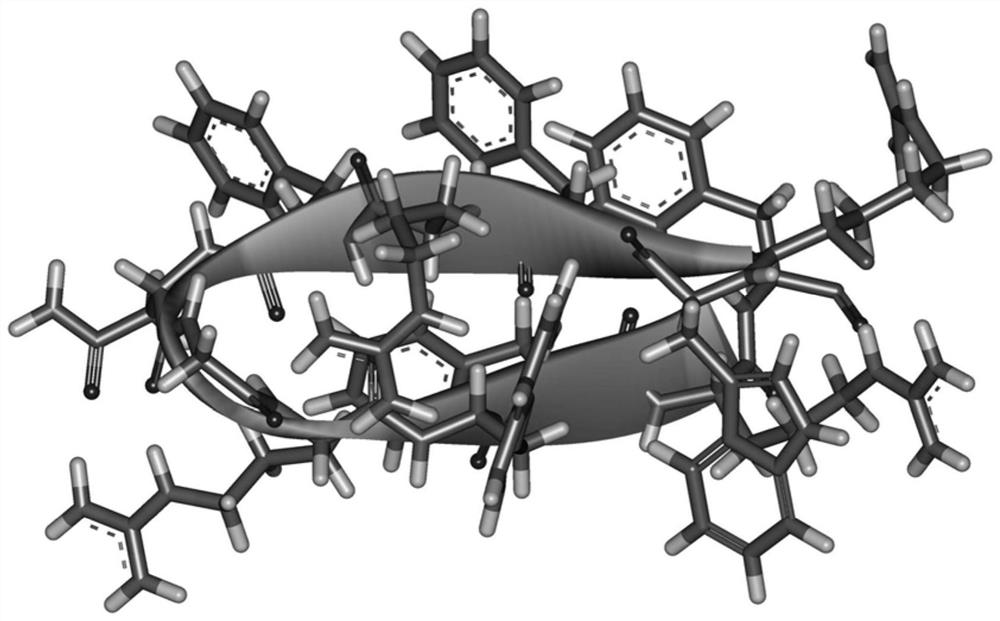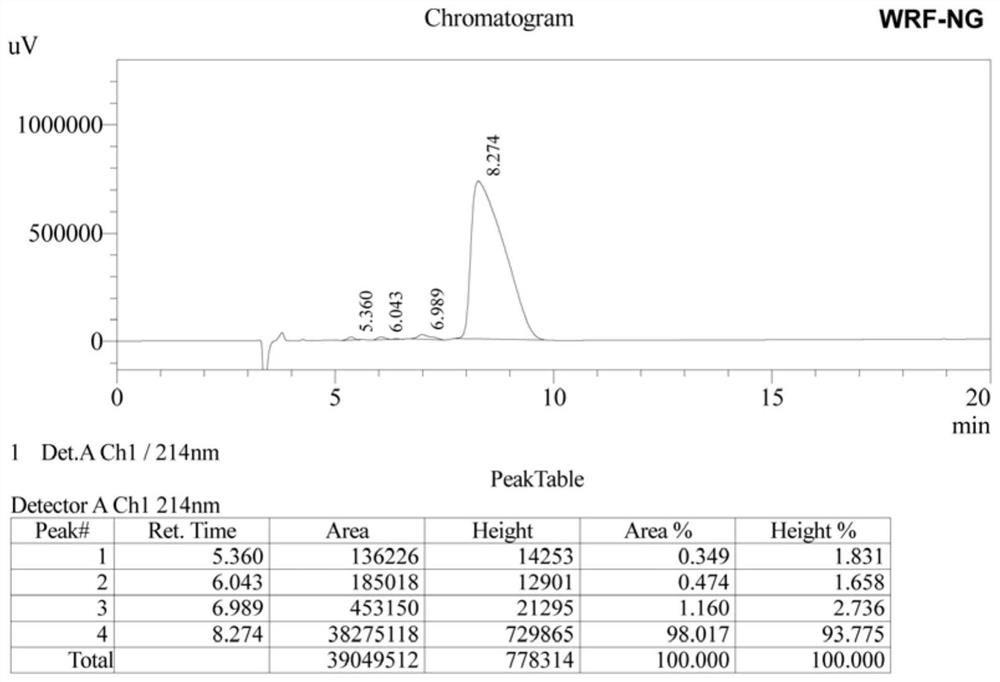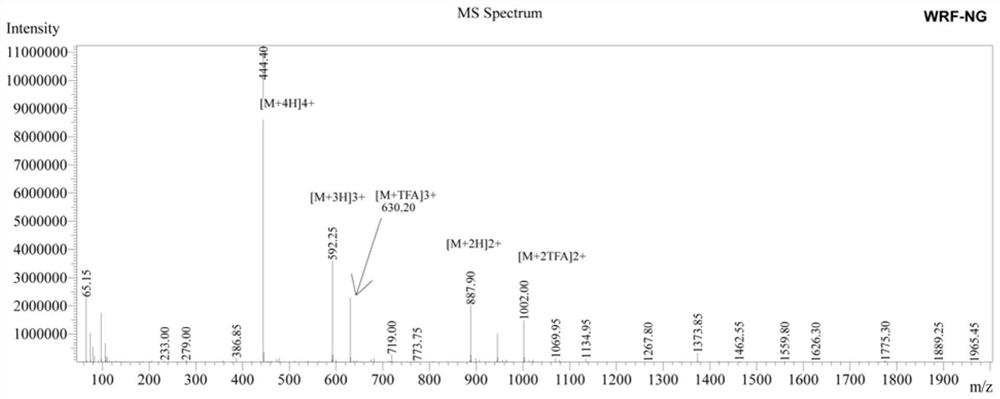β hairpin antimicrobial peptide containing asparagine and glycine turn angle and preparation method thereof
An asparagine and antibacterial peptide technology, applied in the biological field, can solve the problems of high synthesis cost and high concentration hemolysis of β-hairpin antibacterial peptide, and achieve the effects of low synthesis cost, short sequence length and stable structure.
- Summary
- Abstract
- Description
- Claims
- Application Information
AI Technical Summary
Problems solved by technology
Method used
Image
Examples
Embodiment 1
[0014] Antimicrobial Peptide Design RWFRFNGRWFRF-NH 2
[0015] The amino acid sequence of the antimicrobial peptide WRFNG is:
[0016] Arg Trp Phe Arg Phe Asn Gly Arg Trp Phe Arg Phe-NH 2
1 5 10 12
[0017] Taking the Asn-Gly corner as the corner unit, the interaction of tryptophan and arginine forms the mutual attraction of two β-side chains, and designs the antimicrobial peptide template XWYRYZZXWYRY-NH according to the arrangement principle of the β hairpin structure 2 , where X is a positively charged amino acid, Y is a hydrophobic amino acid, and ZZ is a β-turn angle. When X=R, Y=F, and ZZ=NG, the antimicrobial peptide is named WRFNG. The sequence of the antimicrobial peptide is shown in Table 1, peptide WRFNG. The sequence of the antimicrobial peptide formed with the Pro-Gly turn as the turn unit is shown in Table 1 peptide WRFPG. The sequence of the antimicrobial peptide formed with the D-Pro-Gly turn as the turn unit is shown in Table 1 as peptide WRFpG.
[001...
Embodiment 2
[0023] Synthesis of WRFNG Antimicrobial Peptides by Solid Phase Chemical Synthesis
[0024] 1. The preparation of antimicrobial peptides is carried out one by one from the C-terminal to the N-terminal, and is completed by a peptide synthesizer. First, Fmoc-X (X is the first amino acid at the C-terminal of each antimicrobial peptide) is inserted into Wang resin, and then the Fmoc group is removed to obtain X-Wang resin; then Fmoc-Y-Trt-OH (9 -Fmoxy-trimethyl-Y, Y is the second amino acid at the C-terminus of each antimicrobial peptide); according to this procedure, it is synthesized from the C-terminus to the N-terminus until the synthesis is completed, and the side of the Fmoc group is removed chain protection resin;
[0025] 2. Add a cleavage reagent to the peptide resin obtained above, react for 2 hours at 20°C in the dark, filter; wash the precipitate with TFA (trifluoroacetic acid), mix the washing liquid with the above filtrate, concentrate with a rotary evaporator, and ...
Embodiment 3
[0028] Embodiment 3: the mensuration of antimicrobial peptide antibacterial activity
[0029] 1. Determination of antibacterial activity: the minimum inhibitory concentration of antimicrobial peptides was determined by micro broth dilution method. Using 0.01% acetic acid (containing 0.2% BSA) as the diluent, a series of gradient antimicrobial peptide solutions were sequentially prepared using the double dilution method. Take 100 μL of the above solution and place it in a 96-well cell culture plate, then add an equal volume of the bacteria solution to be tested (~10 6 individual / mL) in each well. Positive controls (containing bacterial fluid but not antimicrobial peptides) and negative controls (neither bacterial fluid nor peptides) were set up. Incubate at a constant temperature of 37°C for 18 hours, measure the light absorbance at 492nm (OD 492nm) with a microplate reader, and determine the minimum inhibitory concentration. The test was repeated 3 times, with two parallels...
PUM
 Login to View More
Login to View More Abstract
Description
Claims
Application Information
 Login to View More
Login to View More - R&D
- Intellectual Property
- Life Sciences
- Materials
- Tech Scout
- Unparalleled Data Quality
- Higher Quality Content
- 60% Fewer Hallucinations
Browse by: Latest US Patents, China's latest patents, Technical Efficacy Thesaurus, Application Domain, Technology Topic, Popular Technical Reports.
© 2025 PatSnap. All rights reserved.Legal|Privacy policy|Modern Slavery Act Transparency Statement|Sitemap|About US| Contact US: help@patsnap.com



